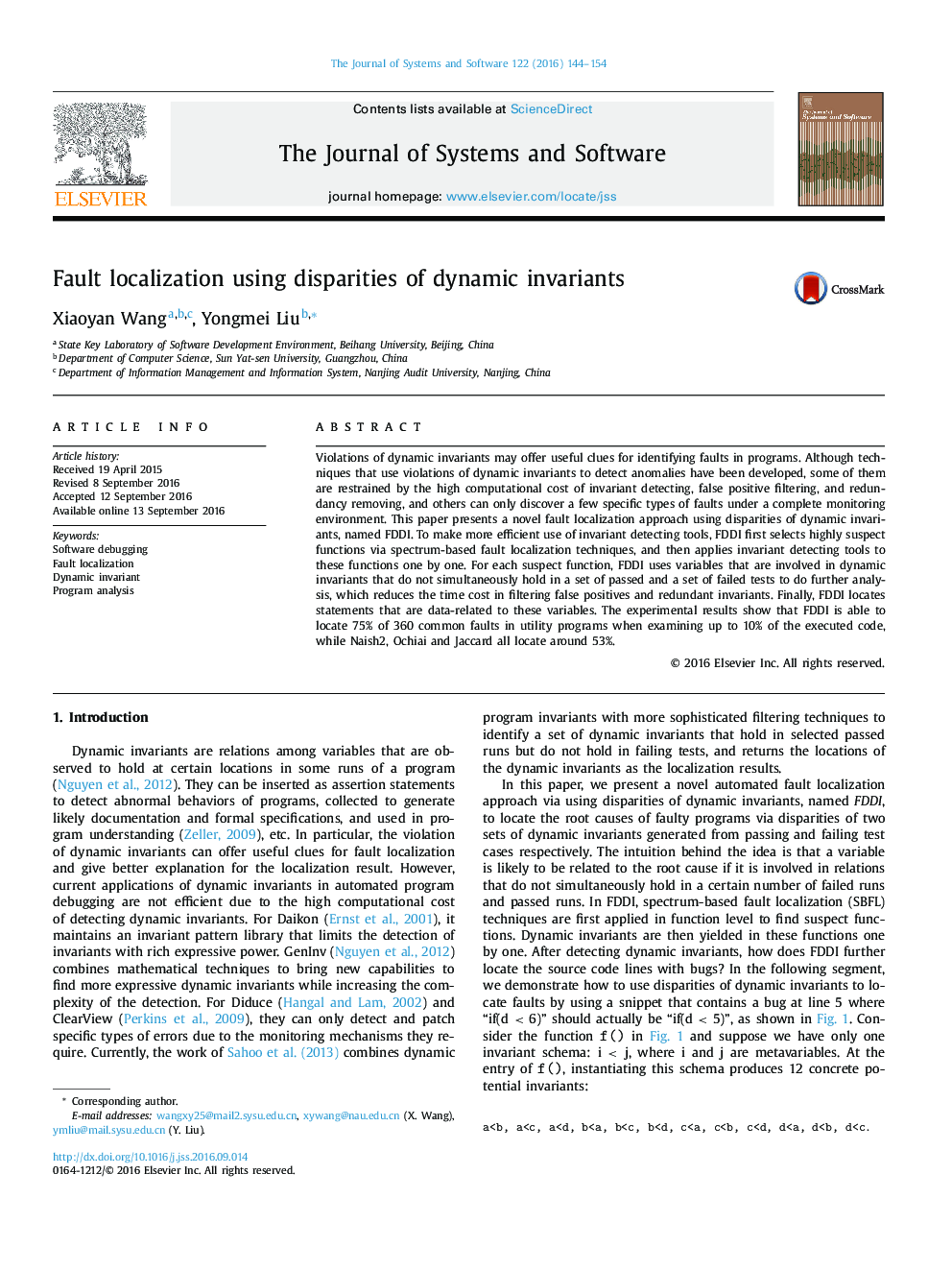| Article ID | Journal | Published Year | Pages | File Type |
|---|---|---|---|---|
| 4956554 | Journal of Systems and Software | 2016 | 11 Pages |
Abstract
Violations of dynamic invariants may offer useful clues for identifying faults in programs. Although techniques that use violations of dynamic invariants to detect anomalies have been developed, some of them are restrained by the high computational cost of invariant detecting, false positive filtering, and redundancy removing, and others can only discover a few specific types of faults under a complete monitoring environment. This paper presents a novel fault localization approach using disparities of dynamic invariants, named FDDI. To make more efficient use of invariant detecting tools, FDDI first selects highly suspect functions via spectrum-based fault localization techniques, and then applies invariant detecting tools to these functions one by one. For each suspect function, FDDI uses variables that are involved in dynamic invariants that do not simultaneously hold in a set of passed and a set of failed tests to do further analysis, which reduces the time cost in filtering false positives and redundant invariants. Finally, FDDI locates statements that are data-related to these variables. The experimental results show that FDDI is able to locate 75% of 360 common faults in utility programs when examining up to 10% of the executed code, while Naish2, Ochiai and Jaccard all locate around 53%.
Related Topics
Physical Sciences and Engineering
Computer Science
Computer Networks and Communications
Authors
Xiaoyan Wang, Yongmei Liu,
